Projects of Japanese high-altitude fighter jets Ki-94 and Ki-94-II
The first raid on Japan was made by American strategic aviation on 18 on April 1942. In the future, the intensity and scale of the raids increased continuously. Over the past 7 months of World War II, Americans have focused on the bombing of Japanese cities with incendiary bombs. This led to significant destruction of Japanese cities 67, which at that time was dominated by wooden residential buildings. The raids caused the death of the 500 order of thousands of Japanese and sheltered approximately 5 of millions of people.
The most terrible raid on Tokyo was made on the night of 9 on 10 March 1945 of the year. The 334 US strategic bomber B-29 took part in the raid and dropped 1700 tons of bombs on the city. The fire destroyed about 40 square kilometers of the city square, more than 100 thousands of people died, they were victims of the fire tornado bombing. This air raid is considered the most devastating in stories using conventional weapons. Tokyo, which was made mostly of wood and paper, could not withstand thousands of incendiary bombs, and the Japanese methods of fighting fires showed their inefficiency.
To counter the strategic American bombers that destroyed cities and industry of the country, the Japanese Air Force needed high-altitude fighter-interceptors. Work on such aircraft began in the year 1942. Tachikawa offered two variants of high-speed and well-armed high-altitude fighter - the Ki-94 and the Ki-94-II, which could become a serious threat to the "flying fortresses". Work on them continued until the end of the Second World War, but none of them soared into the sky, the aircraft remained in history only as projects and prototypes.
Preliminary talks on the development of a well-armed high-altitude fighter aircraft were held in Japan in the middle of 1942, with the army air headquarters (Koku Hombu) and Tachikawa Hikoki KK taking part. The military wanted to get a new high-altitude fighter, which would have developed a speed of about 800 km / h in flight, had a maximum range of 3000 kilometers and was distinguished by the presence of an airtight cabin. Since the requirements were initially quite tough, Koku Hombu decided to issue another order to create a simpler high-altitude fighter-interceptor. A plane with a less stringent requirements set should have been designed by the designers of the Nakajima company.
The plane, which was created by the designers of the company Tachikawa, received the designation Ki-94 (later named Ki-94-I), it already in those years stood out with a very unusual design and appearance. The interceptor fighter was a large double-girder monoplane that was equipped with two Mitsubishi Ha-18 Ru 211-cylinder radial air-cooled engines that developed the 2200 horsepower. The engines were installed in front and behind the cockpit, they set in motion two four-bladed propellers - pulling and pushing, respectively. The planned armament of the new fighter was very powerful and consisted of two 37-mm aviation guns Ho-203 and two 30-mm air guns Ho-105. The maximum speed of the aircraft at an altitude of 10 thousands of meters was supposed to be 780 km / h (forecast expectations).
The Ki-94 full-size wooden model of the aircraft was ready at the end of 1943, however, the development of the high-altitude fighter was curtailed, as the technical department of the air headquarters decided that the project was still very difficult to develop and manufacture, and the design characteristics of the aircraft seemed to be overly optimistic . The preference was given to the simpler high-altitude fighter Nakajima Ki-87. At the same time, the Japanese Air Force Main Command was still interested in continuing work on this design topic. Tachikawa was ordered a new version of the high-altitude fighter, which received the designation Ki-94-II.
The Ki-94-II has been built since the end of 1943. The main purpose of the new fighter-interceptor was to be the fight against the raids of high-altitude bombers of the US Air Force. To do this, the plane, like its predecessor, was planned to be equipped with a pressurized cabin, a powerful turbocharged engine and large-caliber aircraft guns, which were to cope with such a tenacious air target, which was a B-29 bomber. The initial order of the Japanese military included one glider for conducting static tests, the 3 prototype, and the 18 pre-production samples of the Ki-94-II high-altitude fighter, but by the end of World War II only one aircraft was ready that did not even have its first flight scheduled for 18 August 1945 of the year.
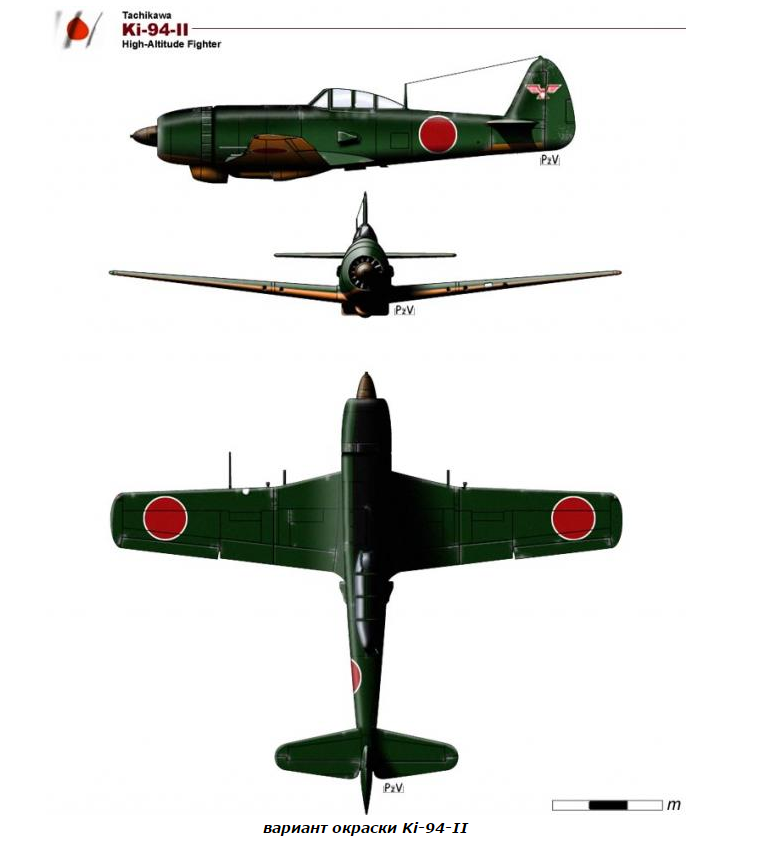
While working on the Ki-94-II aircraft, the Tachikawa company proceeded from a new application that assumed to meet the same flight-technical requirements as that of the rival aircraft Nakajima Ki-87. The project of the new high-altitude fighter Ki-94-II was developed under the leadership of the chief designer Tatsuo Hasegawa. The new aircraft was a single-engine single-engine high-altitude fighter, this time with an ordinary design with a laminar wing and a pressurized cabin, which was located behind the rear edge of the wing.
It was planned to equip the new fighter with a powerful cooled fan with a turbo-compressor 18-cylinder radial engine from Nakajima - Ha-44-12, developing 2400 hp power. The engine power that set in motion the fighter's six-blade propeller was 2450 HP. on take-off, 2350 hp - at a height of 1100 meters, 2200 hp - at a height of 4400 meters and 2040 hp - at a height of 11 000 meters. Armament placed in the wing of the aircraft should have included two 30-mm automatic aircraft guns Ho-105 and two 20-mm aircraft guns Ho-5. From the characteristics of a heavily armed aircraft it can be seen that it was optimized for high-altitude interception of US strategic bombers B-29.
The first Ki-94-II high-altitude fighter was supposed to be ready on July 20 of the year 1945, but the construction of the aircraft was delayed. As a result, he was ready with a two-week lag from the scheduled schedule. The six-blade propeller planned for the aircraft was never ready, so it was decided to equip the aircraft and begin testing the first prototype with a four-bladed propeller temporarily mounted on it. The trials were scheduled to begin on August 18 1945. The second prototype of the Ki-94-II fighter-interceptor, designed to install a six-blade propeller, while the first aircraft was still preparing for the intended first flight, was only in production, but the end of World War II prevented its completion. Further development of the project of the Japanese high-altitude fighter was to be the plane Ki-104, which remained only in the form of paper drawings.
The only built prototype fighter Ki-94-II attracted the attention of Americans. They took the plane to the United States at Middliton Air Base, where the car received the temporary designation FE-150. In 1949, this aircraft was transferred to one of the country's aviation museums, but then its trail is lost. What happened next with the only built fighter Ki-94-II is unknown.
Information sources:
http://www.airwar.ru/enc/fww2/ki94.html
http://www.airwar.ru/enc/fww2/ki94-2.html
http://alternathistory.com/vysotnyi-istrebitel-94-tachikawa-ki-94yaponiya
http://wiki.wargaming.net/ru/Plane:Ki-94-ii
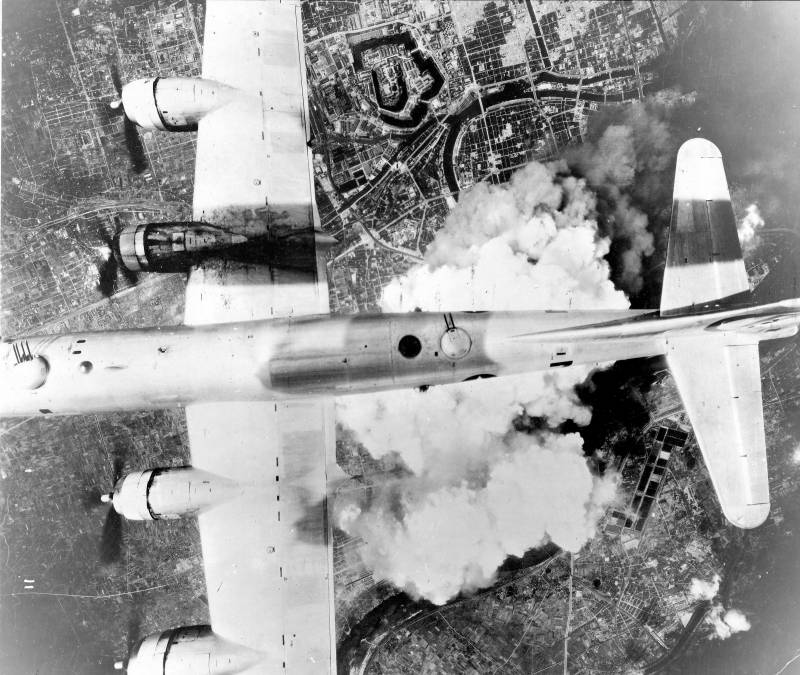
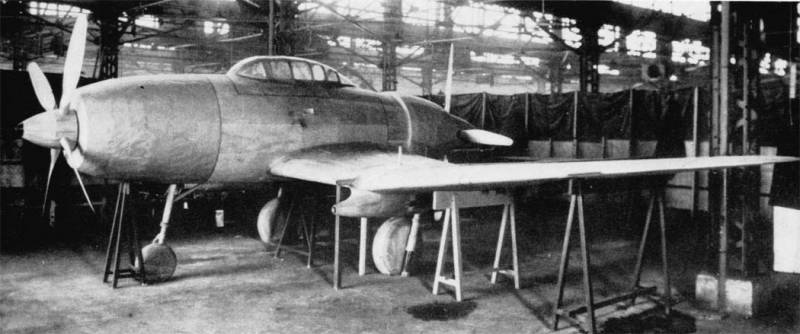
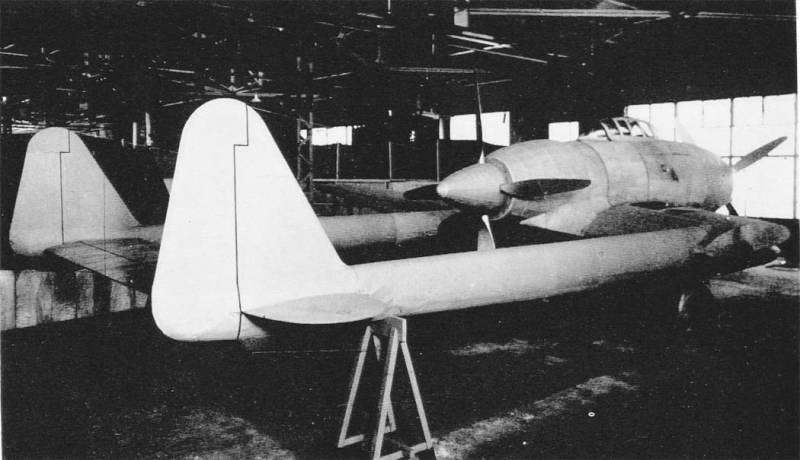
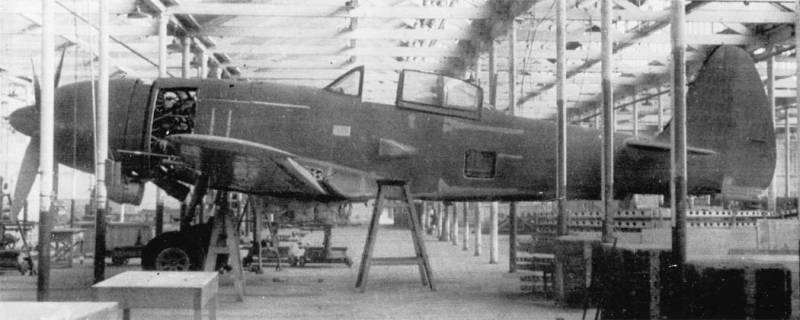
Information